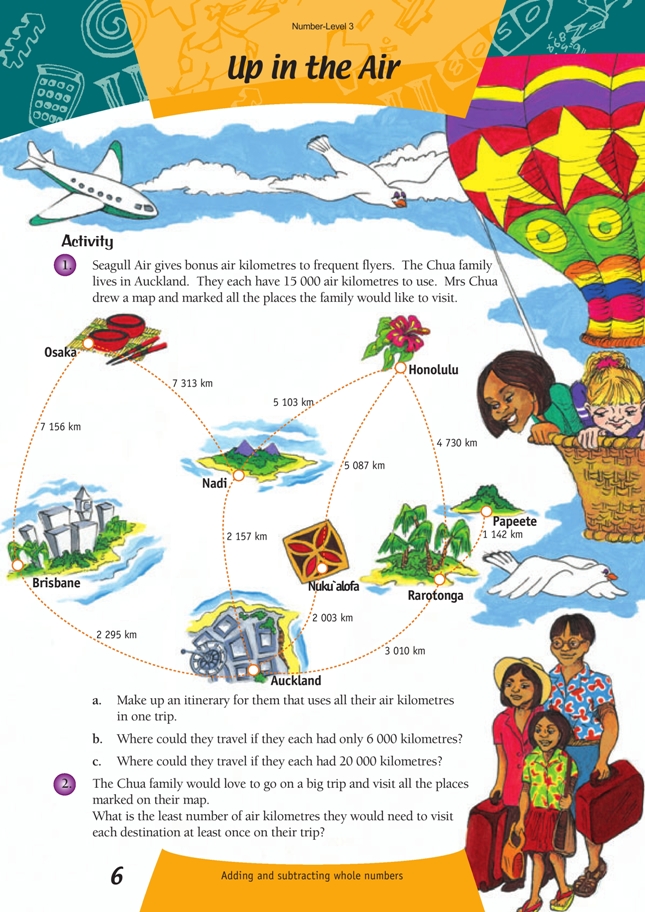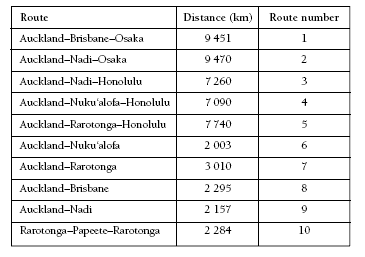Up in the Air
This is a level 3 number activity from the Figure It Out series. It relates to Stage 6 of the Number Framework.
A PDF of the student activity is included.
Click on the image to enlarge it. Click again to close. Download PDF (300 KB)
use mental strategies (eg estimating) to add thousands numbers
This activity provides the opportunity for addition and subtraction of large whole numbers in a problem-solving context that will encourage logical thinking.
Make it clear that each of the Chua family has 15 000 air kilometres, so they will all be travelling together. Students will also have to realise that the Chua family will need to start and finish at Auckland because it is their home town. The Chua family will not want to pay for any extra air travel to get home again.
Students may understand the problem better if they make a chart showing combined totals of the different routes out of Auckland:
Route 10 is included because Papeete can only be accessed through Rarotonga.
Because Osaka is over 9 000 kilometres away from Auckland, there is no way that the Chuas can go there in question 1a. Route numbers 3 and 5 add up to 15 000 and provide a workable itinerary.
Questions 1b and 1c ask where the Chua family could travel. Decide whether you want your students to find some or all of the possible routes. Remind the students that it is all right for the Chuas to do less than the limit of their air kilometres but they cannot do more.
Question 2 can be done by trial and error, but some hints may help the students approach the problem logically, for example, “Only two places need to be visited more than once. Which are they? Discuss your reasons.” (These are Auckland and Rarotonga: Rarotonga because you must come back from Papeete, and Auckland because it is home and also, in the least air-kilometres itinerary, because it must be visited to get to Nuku‘alofa.)
Answers to Activity
1. a. Only two itineraries use up all the air points
in one trip: either Auckland – Nadi – Honolulu – Rarotonga – Auckland or the
reverse: Auckland – Rarotonga – Honolulu – Nadi – Auckland.
b. Itineraries can include only a return trip to either Brisbane, Nadi, or Nuku‘alofa.
c. Answers will vary. The itinerary in a could be extended to include a return trip from Rarotonga to Papeete (2 284 km) or a return trip from Auckland to Nuku‘alofa. Another itinerary could be a round trip taking in Brisbane, Osaka, and Nadi.
2. 35 897 air kilometres. The route that uses the least number of air kilometres is Auckland – Brisbane – Osaka – Nadi – Honolulu – Rarotonga – Papeete – Rarotonga – Auckland – Nuku‘alofa – Auckland.

